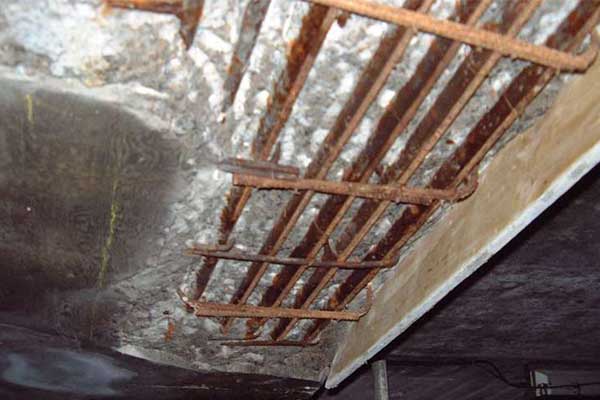Concrete protection methods for steel reinforcement in concrete is needed due to corrosion. It is a natural process that converts a refined metal into a more chemically stable form such as oxide, hydroxide, or sulfide. It is the gradual destruction of materials (usually a metal) by chemical and/or electrochemical reaction with their environment. Corrosion in concrete steel reinforcement degrades the useful properties of materials and structures including strength, appearance and permeability to liquids and gases. Many structural alloys corrode merely from exposure to moisture in air, but the process can be strongly affected by exposure to certain substances. Corrosion can be concentrated locally to form a pit or crack, or it can extend across a wide area more or less uniformly corroding the surface.
The two most common contributing factors leading to steel reinforcement corrosion are;
(i) Chloride attack – localized breakdown of the passive film on the steel reinforcement of concrete by chloride ions
The passivity provided by the alkaline conditions can be destroyed by the presence of chloride ions, even though a high level of alkalinity remains in the concrete. The chloride ion can locally de-passivate the metal and promote active metal dissolution. Chlorides react with the calcium aluminate and calcium aluminoferrite in the concrete to form insoluble calcium chloroaluminate and calcium chloro ferrites in which the chloride is bound in non-active form. However, the reaction is never complete and some active soluble chloride always remains in equilibrium in the aqueous phase in the concrete.
(ii) Carbonation – general breakdown of passivity by neutralization of steel reinforcement of concrete by reaction with atmospheric carbon dioxide
Carbon dioxide, which is present in the air at around 0.3 percent by volume, dissolves in water to form a mildly acidic solution. This forms within the pores of the concrete, here it reacts with the alkaline calcium hydroxide forming insoluble calcium carbonate. The carbonation process moves as a front through the concrete, on reaching the reinforcing steel, the passive layer decays when the pH value drops below 10.5. If the carbonated front penetrates sufficiently deeply into the concrete to intersect with the concrete reinforcement interface, protection is lost and, since both oxygen and moisture are available, the steel is likely to corrode.
Corrosion Protection Methods for Concrete Reinforcing Steel
Galvanization protection

Galvanized reinforcing steel is used in concrete where unprotected reinforcement will not have adequate durability. The susceptibility of concrete structures to the intrusion of chlorides is the primary incentive for using galvanized steel reinforcement. Galvanized reinforcing steel is especially useful when the reinforcement will be exposed to the weather before construction begins. It provides visible assurance that the steel has not rusted and requires no on-site repair, unlike most other coatings. Galvanized reinforcing steel can withstand exposure to chloride ion concentrations several times higher than the chloride level that causes corrosion in black steel reinforcement.
Corrosion-inhibiting admixture protection
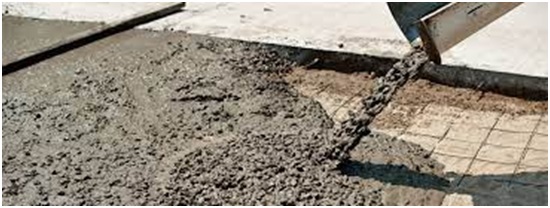
Inhibitors are the chemical substances which are added to the concrete in small concentrations to inhibit the time to initiation of corrosion in concrete structures. Corrosion-inhibiting admixtures increase the passivation of reinforcement and other embedded steel. This can inhibit corrosion when passivation would otherwise have been lost as a result of chloride ingress or carbonation. They are added to concrete during production and are referred to as ‘integral’ corrosion-inhibitors. These can significantly reduce maintenance costs of reinforced concrete structures. Few of the most popular Corrosion Inhibiting Admixtures are, Amine Carboxylate, Amine-ester Organic Emulsion, Calcium Nitrite, Organic Alkenyl Dicarboxylic Acid Salt, to name a few.
Cathodic protection
Cathodic protection is often used to mitigate corrosion damage to active metal surfaces. It is used all over the globe to protect pipelines, water treatment plants, above and underwater storage tanks, ship and boat hulls, offshore production platforms, reinforcement bars in concrete structures and piers, and more. Cathodic protection is often used to protect steel from corrosion. Corrosion is caused when two dissimilar metals are submerged in an electrolytic substance such as water, soil, or concrete. This type of metal conducting path between the two dissimilar metals allows a pathway through which free electrons move from the more active metal (anode) to the less active metal (cathode). If free electrons from the anode do not reach active sites on the cathode before the arrival of oxygen, ions at the active sites can then recombine to produce ferrous hydroxide, i.e. rust.

Galvanic cathodic protection
Galvanic cathodic protection is a corrosion prevention method that uses electrochemical means to protect a base material from corrosion. It does this through the use of a sacrificial anode that corrodes before the material being protected by the sacrificial anode. Galvanic cathodic protection is one of the most commonly employed forms of cathodic protection because of its ease of use. Galvanic cathodic protection requires a sacrificial anode that is more electrochemically reactive than the material to be protected. Since the sacrificial anode is more electrochemically reactive, it will corrode before the protected material, so long as they are electrically connected. Sacrificial anodes are available in many different shapes and sizes.

Coating corrosion protection
Electrocoating
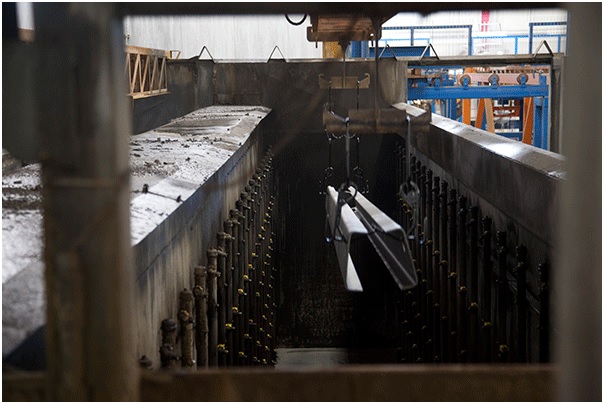
Electrocoating is a process by which electrically charged particles are deposited out of a water suspension to coat a conductive part. During the electrocoat process, paint is applied to a part at a certain film thickness, which is regulated by the amount of voltage applied. An electrocoat system can coat any objects or metals as long as they have enough electrical conductivity in the 0-400-v range. The electrically charged paint will attach or deposit to any surface in the bath that is electrically opposite in charge.
Metallic coatings

Metallic coatings are applied in cases where the substrate is coated with a more noble metal, as with copper on steel. This type of protective coating is effective only when the coating is free from pores or damages. It contains a metallic element or alloy. Metallic coatings can be applied by using a sprayer, electrochemically, chemically or mechanically. These coatings are applied on equipment requiring a shiny or glossy appearance and protection from sunlight, corrosion and oxidation. Metallic coatings are usually applied on steel surfaces using one of five common methods.
- Anodizing – While anodizing is mostly used with aluminum, it can also be used on other metals such as titanium and zinc. It effectively increases the thickness of this aluminum oxide layer, which makes it more resistant to corrosion. The anodizing process also provides better adhesion for paints and other finishes.
- Hot-dip galvanizing – It is a process by which a layer of zinc is applied to a ferrous metal to prevent corrosion. The process most-commonly refers to hot-dip galvanizing, where a piece of steel is dipped into a bath of molten zinc. The zinc adheres to the steel and immediately reacts with oxygen in the air to form a very strong zinc oxide layer, which prevents corrosion of the steel below. The zinc and steel form a metallurgical bond so the coating will not flake off.
- Thermal spraying – A group of coating processes in which finely divided metallic coating materials are deposited in a molten or semi-molten condition to form a coating.
- Sherardizing – The formation of a corrosion-resistant, zinc-iron alloy coating on the surface of steel or iron. The method involves heating the object in an airtight container that has zinc powder
- Electroplating – Electric current is used to adhere a solution of (generally) cadmium and chromium to a metal. Nickel plating is a form of electroplating.
Organic coating
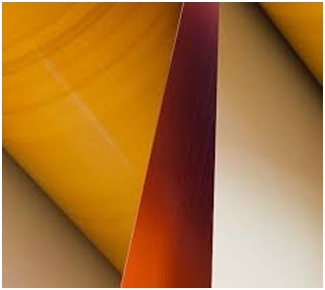
It is a kind of coating whose main ingredients are obtained from vegetable or animal substances, or compounds that are strong in carbon. The coat will be monolithic (one layer) or it can consist of two or more layers. These have elevated amounts of resin absorption when it comes to solid components, such as binders, pigments and additives. They can be water-based or reduced solvent, compared to traditional coatings with a higher rating of volatile organic compounds. The application of an organic coating, such as paint, is a cost effective corrosion protection method. Organic coatings act as a barrier to a corrosive solution or electrolyte. They prevent, or retard, the transfer of electrochemical charge from the corrosive solution to the metal underneath the organic coating. The coating thickness of the autodeposition film is time and temperature dependent.
Powder coating
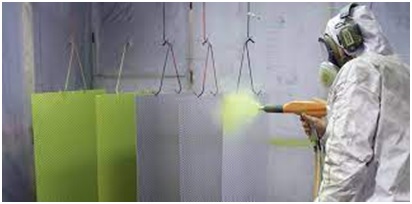
The powder coating is sprayed on the surface of the workpiece by powder spraying equipment. Under the action of static electricity, the powder is uniformly adsorbed on the surface of the workpiece in the form of powder. Powder coating uses a simple process to obtain powder-coated stainless steel products in different colors, and different powder-coating colors can be used to change the feel of stainless-steel surface. Unlike conventional liquid paint which is delivered via an evaporating solvent, powder coating is typically applied electrostatically and then cured under heat or with ultraviolet light. The powder may be a thermoplastic or a thermoset polymer. It is usually used to create a hard finish that is tougher than conventional paint. Powder coating adds to the steel’s durability, helping the frame to withstand damages better and last longer.
Image source- Materials Performance, Steel Construction Info, Piercemfrg.com, ArcelorMittal Europe, Coatings.co.in, Galvanuizedrebar.com, OMEX, ronacrete.co.uk

